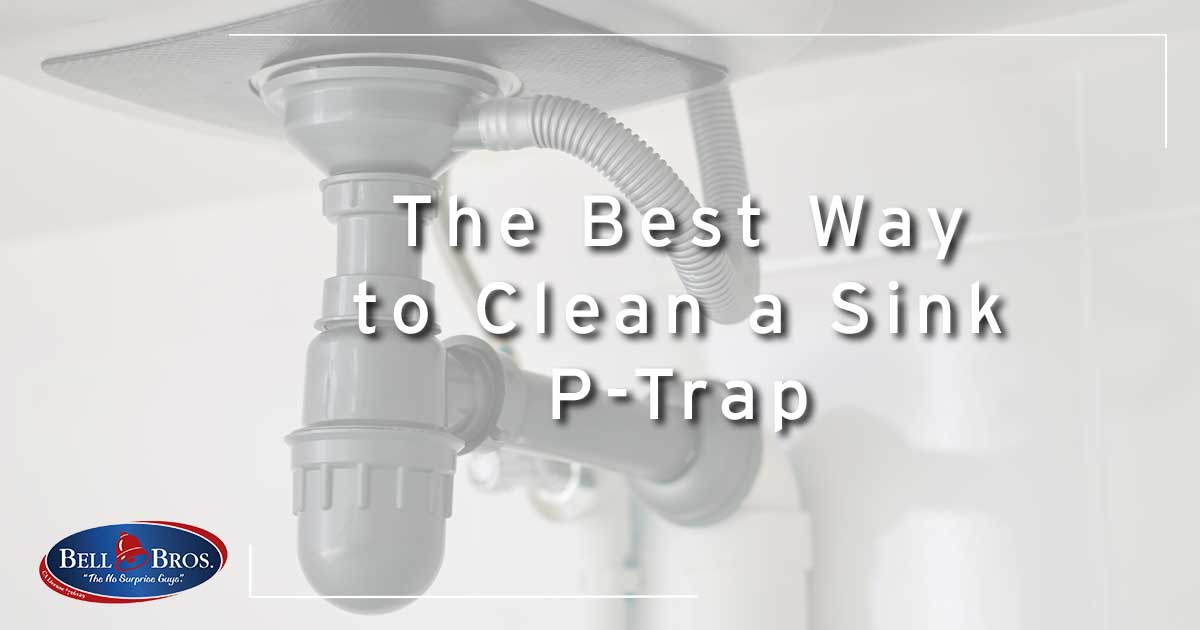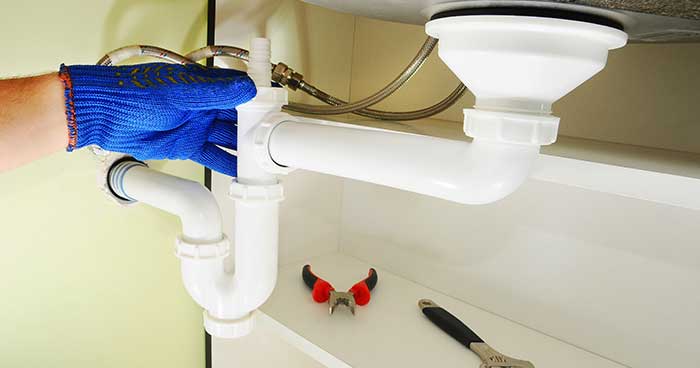
Plumbing issues can be hard to diagnose. There’s no way you can lift the hood off your plumbing system and take a look inside. Despite this, there is one easy plumbing fix you can do on your own. Here is the best way to clean a sink P-trap.
What is a P-Trap?
Almost any basin that collects water has a u-shaped pipe underneath it. This pipe is sometimes called a “plumbing trap,” or P-trap.
The sharp drop in the pipe acts as a gravity barrier and creates a seal against noxious odors and gasses from coming back up through your system.

For this piece of pipe to do its job, it needs to be filled with water. Water helps create that seal between your nice clean home, and the odors that come from the sewer line.
Have you ever come home from a trip and noticed a bad smell? Or smelled something nasty in a sink that’s not used too much? Both these problems can be attributed to a dry P-trap.
Simply running some water for about 10-15 seconds will help literally drown out the smell.
This can be all well and good if this was the only issue, but there are times when the P-trap can get backed up. This makes some sense when you think of what all gets sent down a bathroom and kitchen drain.
Step by Step: How to Clean a Sink P-Trap
Materials Needed:

- Bucket – Even when the water is off, the trap will still have water
- Flexible Wire Brush – Incredibly useful for cleaning the curved pipe
- Pliers or Adjustable Wrench – For when you need some extra force to loosen a nut
Step 1: Turn off the Water Faucet
When you’re cleaning a sink P-trap, you don’t need to shut off the water to the entire house. All you need to do is make sure the sink’s faucet is off.
Keep in mind that even though the water is off, there will still be water in the P-trap. No matter how long you wait after turning off the water, this is a wet process.
We recommend putting the bucket under the pipe when you turn the water off. This will ensure everything is caught and you don’t spill water and pipe debris everywhere.
Step 2: Remove the P-Trap
Removing the P-trap itself should be easy enough. In most cases, you should be able to unscrew everything with your hands. Tougher seals will need the pliers or pipe wrench.
It’s important to keep in mind that water can start to fall from the pipe the second you loosen a nut. It all depends on how full the P-trap is.
Now that you have the trap loose, dump its contents into the bucket and you’re ready for step 3.
Step 3: Clean the P-Trap
Fortunately, cleaning the P-trap is easy work. Start by pulling out anything solid and dumping it in the trash.
Next, wet your flexible wire brush and clean the inside of the pipe. This brush is similar to the ones used to clean slim water bottles.

Move the wire brush though the pipe until there is no longer residue sticking to the brush. This is all you need to do.
Finally, look through the pipe to make sure there is no extra debris sticking to the walls.
Step 4: Put Everything Back Together
Once you verify the pipe is clean, it’s time to put everything back. This process is just as easy as taking everything apart.
Begin by placing the pipe back into place. Make sure the long end of the pipe is facing the front of the drain.
First, hand screw the nuts back into place. Sometimes you’ll need to utilize a heavier hand. Just use the wrench or pliers.
Don’t remove the bucket yet, you’re not done. It’s time to test the pipe.
Run the water for 15 seconds and watch it drain through the pipe. Make sure nothing is leaking, and then you’re done.
Is the pipe still leaking? You may need to tighten the nuts or use Teflon tape to bolster the seal between the pipe and nuts.
How Often Should I Clean a sink P-Trap?
The experts at Bell Brothers recommend clearing your P-trap around four times per year, which averages out to once every three months.
While you’re cleaning your P-Trap, don’t forget to clear your sink’s drain at the same time. These two small actions can help keep the plumber from paying you a visit.
Dealing with a bigger clog? Call the experts at Bell Brothers!

